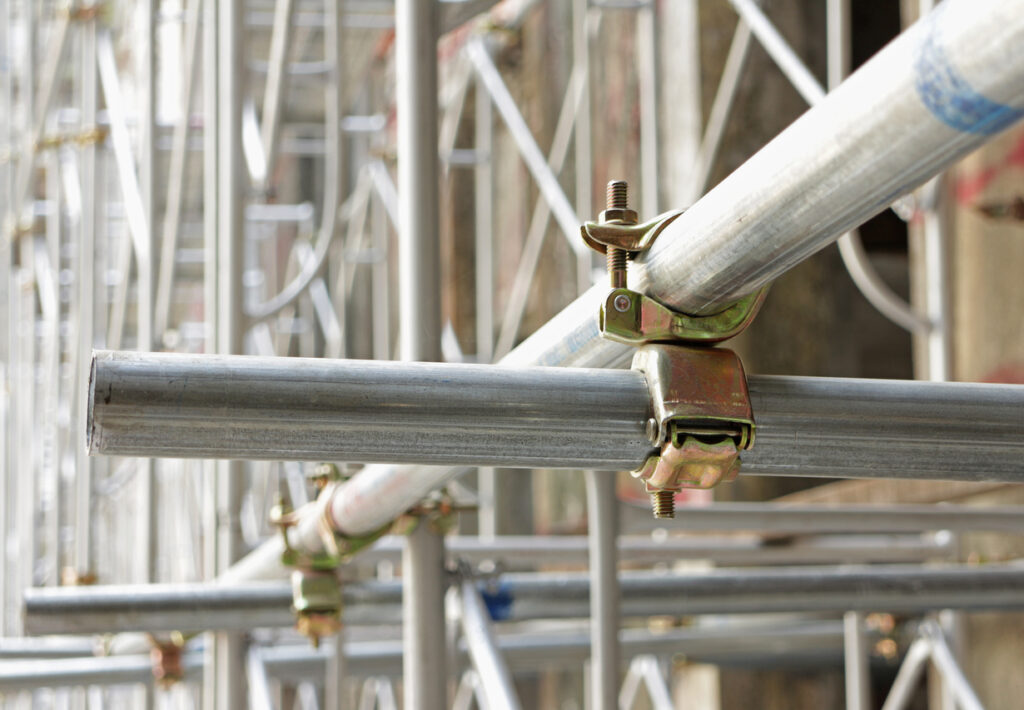A Guide to Choosing the Right Temporary Scaffolding for Your Project
When undertaking a construction project, one of the critical components often overlooked is the choice of temporary scaffolding. The right scaffolding solution not only ensures the safety of workers but also enhances efficiency and productivity on site. This guide elucidates the essentials of selecting appropriate temporary scaffolding for your project.
Understanding the Basics of Temporary Scaffolding
Temporary scaffolding serves as a platform that supports workers, tools, and materials during the construction, maintenance, or repair of buildings. It is crucial in maintaining site safety and facilitating work at height. Grasping the fundamentals of scaffolding is the first step towards making an informed selection.
The Role of Scaffolding in Construction Projects
Scaffolding provides a stable base from which workers can perform their tasks safely. It allows for easy access to various heights and provides a space for storing tools and materials. Whether it is painting façades, performing roof repairs, or conducting a full restoration, scaffolding ensures that work can be done efficiently and securely.
In addition to its supportive function, scaffolding serves as a protective barrier against accidents and falls, which are common hazards in construction environments. This is essential in maintaining not only the safety of workers but also that of the general public. Furthermore, the presence of scaffolding can enhance the overall workflow on a construction site, as it allows multiple teams to work simultaneously at different heights without interfering with each other. This efficiency can significantly reduce project timelines and costs, making it a vital component in modern construction practices.

Different Types of Temporary Scaffolding
There are several types of temporary scaffolding suited for different types of projects. Some common types include:
- Frame Scaffolding: One of the most widely used types, frame scaffolding is versatile and relatively easy to assemble.
- System Scaffolding: This modular scaffolding features prefabricated components that offer flexible configurations.
- Suspended Scaffolding: Ideal for tall structures, it hangs from roofs or beams and is often employed for tasks like window cleaning.
- Rolling Scaffolding: Portable and easy to manoeuvre, rolling scaffolding is useful for tasks requiring mobility across large areas.
Understanding these different types will help in selecting the most appropriate scaffolding for the specific needs of your project. Additionally, it is important to consider the load capacity and height requirements of each type, as well as the specific regulations that govern scaffolding use in your area. For instance, in the UK, scaffolding must comply with the Health and Safety Executive (HSE) guidelines, which ensure that all structures are erected and maintained to the highest safety standards. This not only protects the workers but also minimises risks to the public, making adherence to these regulations paramount in any construction endeavour. Read more about risks on https://www.riskedu.se/
Key Factors to Consider When Choosing Scaffolding
Choosing the correct scaffolding involves evaluating multiple factors unique to each project. These considerations ensure that the selected scaffolding meets operational needs while maintaining safety standards.
Assessing the Project Requirements
The nature of the construction project significantly influences the type of scaffolding required. It is crucial to assess the height, duration, and complexity of the job. For example, a high-rise building under construction may need robust and extensive scaffolding arrangements, whereas a smaller renovation may only require basic structures.
Additionally, understanding the workflow of the project is essential. For instance, projects involving heavy machinery may require scaffolding that can support greater loads while allowing for a smooth flow of operations. Furthermore, the type of work being performed can dictate the scaffolding design; tasks such as bricklaying or painting may necessitate different configurations to ensure that workers have easy access to their work areas without compromising safety.
Considering the Site Conditions
Site conditions can greatly affect the choice of scaffolding. Factors such as ground stability, weather conditions, and neighbouring structures should be taken into account. An unstable ground may require the scaffolding to be anchored or supported in specific ways to ensure safety.
Moreover, adverse weather conditions such as high winds or heavy rains can impact the integrity of scaffolding. It is important to analyse these conditions thoughtfully to choose scaffolding that can withstand environmental factors. For instance, in coastal areas where strong gusts are common, opting for scaffolding with additional bracing may be prudent. Additionally, the proximity of nearby buildings or trees can pose risks, necessitating careful planning to avoid potential hazards such as falling debris or obstructions that could impede access. Click here to find more about debris.
Understanding Load Capacity
The scaffold’s load capacity is one of the most critical considerations. It determines how much weight can be safely supported and is essential for preventing accidents and ensuring worker safety. Every scaffold type has a specified load capacity which must be adhered to strictly.
Always consult with the supplier to understand the limitations and features of the scaffolding system you intend to use. This ensures that your choice meets both the weight requirements of the materials and the number of workers operating from the scaffolding. Additionally, it is advisable to conduct regular inspections of the scaffolding throughout the project to ensure that it remains within safe load limits, especially as loads may change during different phases of construction. Training workers on load distribution and the importance of not exceeding capacity can further enhance safety on site, fostering a culture of awareness and responsibility among the team members.
Safety Considerations for Temporary Scaffolding
Safety must be paramount when selecting and utilising scaffolding. Adhering to safety regulations not only protects workers but also safeguards the integrity of the construction project itself.
Importance of Safety Standards
The scaffolding must comply with national and local safety standards. Regulations often dictate specific requirements regarding the materials, construction methods, and maintenance of scaffolding systems. Ensuring compliance minimizes the risk of accidents and legal repercussions.
Regular inspections must be conducted to check for any wear and tear or damage, and only qualified personnel should be allowed to assemble and dismantle scaffolding. Training for employees on safe practices is also essential to foster a culture of safety on-site. Moreover, it is beneficial for companies to keep detailed records of inspections and maintenance activities, as this documentation can serve as evidence of compliance and due diligence in the event of an incident.
Ensuring Stability and Strength
Scaffolding must be erected securely to prevent collapses and falls. This involves ensuring that the base is level and capable of supporting the scaffold’s weight. Furthermore, it is advisable to use guardrails and toeboards to provide additional safety for workers operating at heights.
Access points must be clearly marked and free of obstructions to allow for safe entry and exit from the scaffolding. Adequate training on the proper use of ladders and other access methods is also crucial in maintaining overall safety. Additionally, it is important to consider the environmental factors that may affect scaffolding stability, such as high winds or adverse weather conditions. Temporary scaffolding should be designed to withstand these elements, and contingency plans should be in place to secure the structure during inclement weather. This proactive approach not only enhances worker safety but also contributes to the overall efficiency of the construction project.

The Process of Erecting and Dismantling Scaffolding
The erection and dismantling of scaffolding are critical operations that require careful planning and execution. A systematic approach will ensure that these processes are conducted safely and efficiently.
Planning for Scaffolding Erection
Before starting the erection process, the scaffolding plan should be developed in detail. This includes identifying the specific scaffolding system to be used, determining the sequence of assembly, and assigning responsibilities to trained personnel.
It is vital to conduct a risk assessment beforehand and take necessary precautions to mitigate any identified hazards. Preparing for potential challenges will help facilitate a smooth erecting process. Furthermore, it is essential to consider the environmental factors that may impact the scaffolding, such as wind conditions and nearby structures. A thorough understanding of the site conditions can prevent complications during the erection phase, ensuring that the scaffolding is both stable and secure.
Safe Dismantling Procedures
Dismantling scaffolding requires just as much precision and safety as erecting it. The same planning approach should be applied to ensure that this process does not compromise the safety of workers. A systematic approach, where elements are removed in the reverse order of assembly, is advisable.
During dismantling, workers should remain vigilant and wear appropriate safety gear. Ensuring that ground conditions are stable is also paramount to prevent accidents during this critical phase. Additionally, it is important to communicate effectively among team members throughout the dismantling process. This can involve using hand signals or radios to ensure that everyone is aware of the actions being taken, thus reducing the risk of miscommunication and potential accidents. Furthermore, a designated area for storing dismantled materials should be established to keep the worksite organised and minimise hazards associated with tripping or falling objects.
Hiring Versus Buying Temporary Scaffolding
One of the final decisions a construction manager must make is whether to hire or buy scaffolding. Both options have their own merits, and the choice often hinges on the specific needs of the project.
Evaluating Cost-effectiveness
Hiring scaffolding can often be more cost-effective for short-term projects, as it eliminates the need for a large upfront investment. It allows flexibility, as you can adjust the number of scaffolding units based on the current necessity.
However, for long-term projects, purchasing scaffolding may provide better value over time, especially if you plan to use it for multiple projects. It’s essential to evaluate the project’s duration and frequency of scaffolding needs before making a decision.
Assessing Your Long-term Needs
Consider your future projects and whether the scaffolding will be useful beyond the current job. If you anticipate numerous projects requiring scaffolding, investing in a quality system may provide long-term advantages. Evaluate also the storage requirements and maintenance tasks associated with owning scaffolding, as these factors can influence your decision.
In essence, your choice should align with both your immediate project requirements and your overarching strategy for future construction needs.
By understanding the essentials of temporary scaffolding, weighing the various factors involved, and considering both the safety implications and financial aspects, you can make an informed decision that best serves your construction project. Always prioritise safety and compliance to safeguard your team and guarantee project success.
Additionally, it is worth noting that the type of scaffolding required can vary significantly depending on the nature of the work being undertaken. For instance, projects involving intricate architectural details may necessitate more specialised scaffolding systems, such as cantilever or suspended scaffolds, which can increase both the complexity and cost of the setup. Therefore, understanding the specific requirements of your project is crucial in determining whether hiring or purchasing is the most viable option.
Furthermore, the logistics of scaffolding delivery and assembly should not be overlooked. When hiring scaffolding, companies often provide delivery and setup services, which can save time and reduce the burden on your workforce. Conversely, if you choose to buy, you must factor in the costs and logistics of transporting the scaffolding to and from your site, as well as the potential need for skilled personnel to assemble and dismantle the structure safely. This aspect can greatly influence the overall efficiency and productivity of your project, making it an essential consideration in your decision-making process.